On 26 November 1932 a vast crowd converged on Lorne to celebrate the opening of the just completed Great Ocean Road.
Construction had begun 13 years earlier, with the detonation of a section of rock at the George River, outside Lorne. Harry Lawson, Premier of Victoria, detonated the charge. His journey from Melbourne took just over 10 hours – the new road he was assured, would shave 7 hours off the trip.
Nearing the end of the First World War the State War Council was looking for projects to employ returned servicemen. William Calder, Chairman of the Country Roads Board, proposed a series of roads to link the coastal townships of the south west coast.

The Great Ocean Road Trust was established and first met in Colac on 22 March 1918. The meeting brought together representatives from the townships along the proposed route, and farmers – ‘It is said to be the first time in the history of Victoria that farmers and motorists have met on a common platform to advocate the construction of a road.’1
Howard Hitchcock, Geelong mayor and Trust president, guided the project. Combining its scale and vision with spectacular settings, the road would honour the contribution of the AIF in the Great War.
Construction costs were met by public subscriptions and additional borrowings. The loans were repaid with toll fees until 1936 when the Trust handed the road over to the State Government. With these coastal communities now accessible land was sold and subdivided to provide further funds.

A survey party, including returned servicemen, set off in August 1918 and reported back the joy of being…
…out in the open air once more and free from the four walls of the various hospitals of which we have seen so much…No scheme placed before the public for the benefit of the returned soldiers has the same solid basis combined with the sure and lasting benefits and efficiency to the general public of Victoria than this Great Ocean Road promises to become. We are looking forward to our next camp which will be the Wye River, and to see the Cumberland and Mount Defiance, both of which we are told on good authority, are of surpassing beauty……one of the Great Ocean Roads of the World.
The Great Ocean Road, Port Fairy Gazette, 7 October 1918, p.2

Over the full construction period, 3000 returned servicemen built the road, largely by pick, shovel and barrow. The workers lived on campsites set up along the route – the Cumberland River site later becoming popular with holiday makers. Their task was a Herculean one:
For mile after mile the road had to be blasted out of the rock, and the workers were often forced, before they could gain a footing, to hack a narrow track along the cliff face. Crouching against the rock, with the sea breaking 100ft. below, the men pushed on steadily with pick and shovel, drill, and dynamite, and gradually the road grew beneath their feet. Valleys had to be crossed, hills to be passed, and thousands of tons of rock blown and hewn from the high seawall.
The Great Ocean Road, The Argus, 26 November, 1932, p. 6
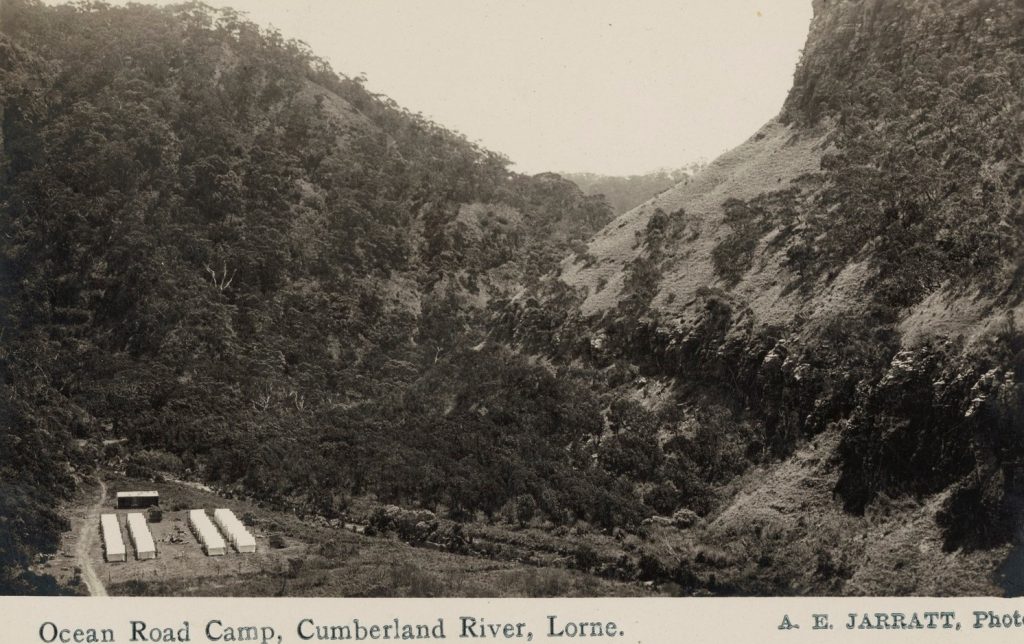
The first section opened on 18 March 1922, the procession leaving from Geelong and with stops along the way arrived in Lorne by 3pm for the celebrations to proceed – now only 3 1/2 hours drive from Melbourne.2
The Memorial Archway at Eastern View was erected in 1939 in memory of W.T.B. McCormack, engineer and chairman of the Country Roads Board 3
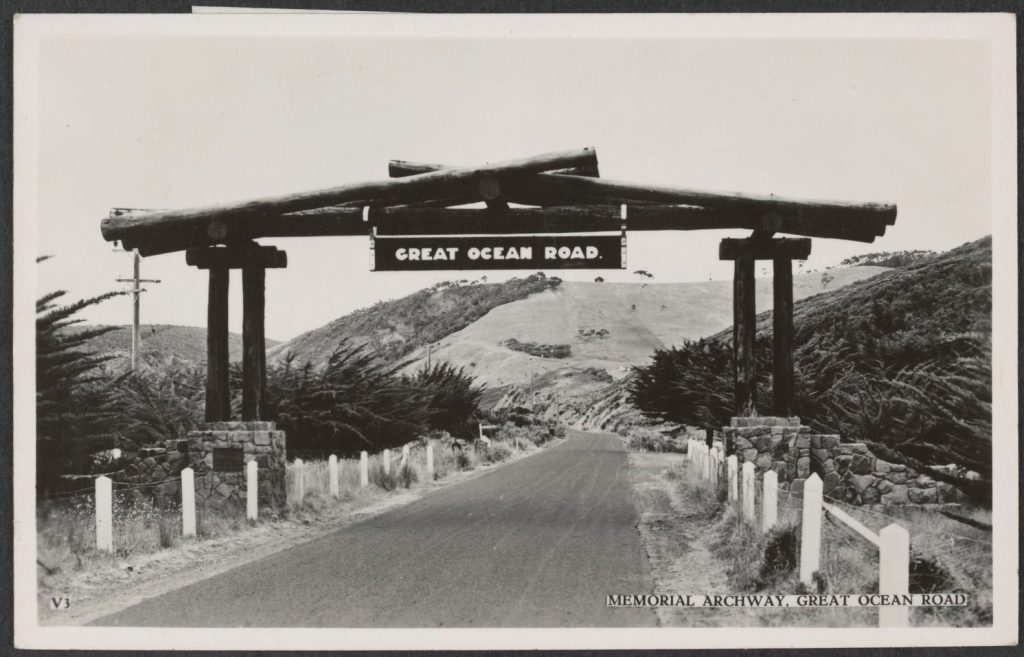
A challenge, nearing the end of the project, was a 30 feet chunk of rock blocking the road around Mt Defiance, between Lorne and Wye River. It was not cleared until late in 1932. 4
This route will pass through some of the finest scenic country in Australia and give tourists easy access to a section of the coastline which for beauty is hard to match anywhere on this globe…The road (their work) when completed will stand for all time as a witness to the devotion of 60,000 men who died, not just for this small strip of Australian shore, but for all contained by her long 12,000 miles of coastline.
The road of a thousand charms: the Great Ocean Road, Melbourne, Morris Press, [193-].

The Great Ocean Road features as a travel destination in this early road trip scrap book and in many post cards. Road trips soon became a popular pastime as car ownership grew in the post-war period 5.
Newspapers such as The Herald ran a regular Touring Club column enticing adventurers out onto the open road.
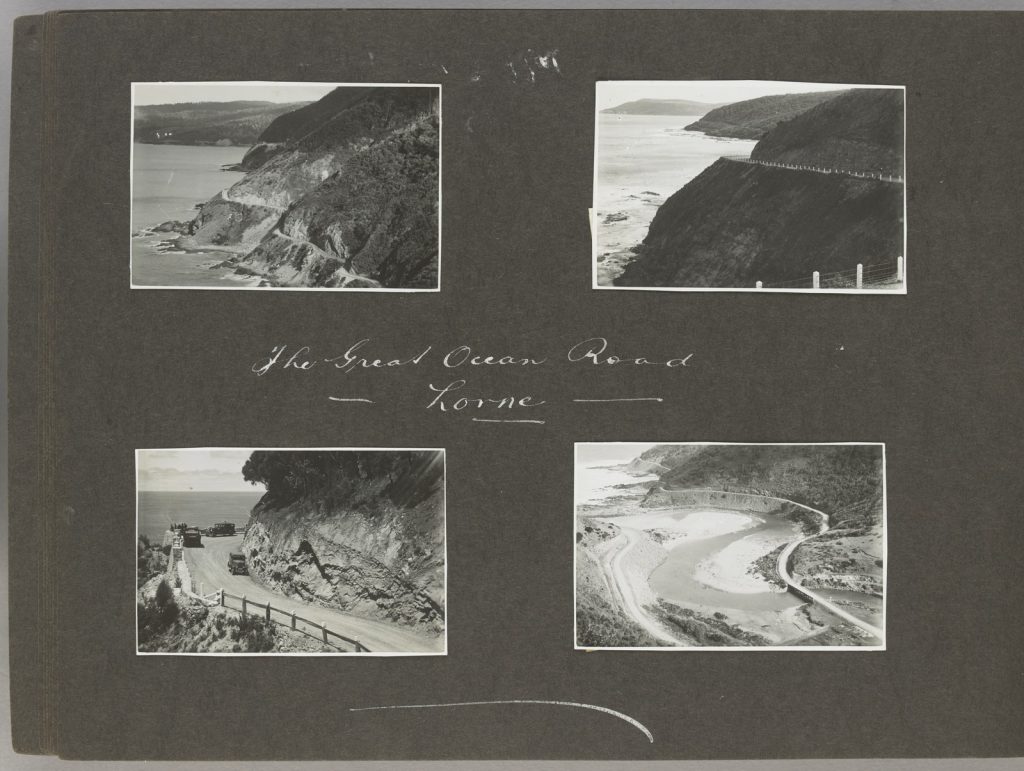
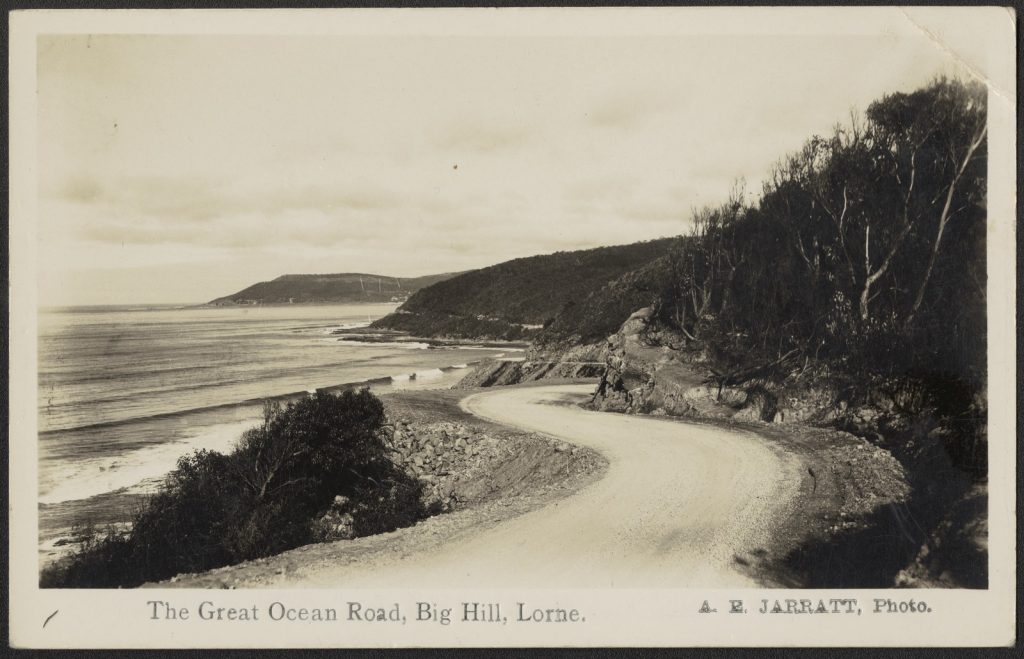
The opening weekend included festivities for the townships along the road including fishing and photographic competitions and a gliding competition at Apollo Bay. In the evening beacons illuminated the headlands along the road, from Anglesea to Apollo Bay.6
Speeches recalled ‘Memories of workmen suspended by ropes from tree-trunks while they hewed the first narrow foothold in the rocky cliffs of the Southern Ocean coast.’7
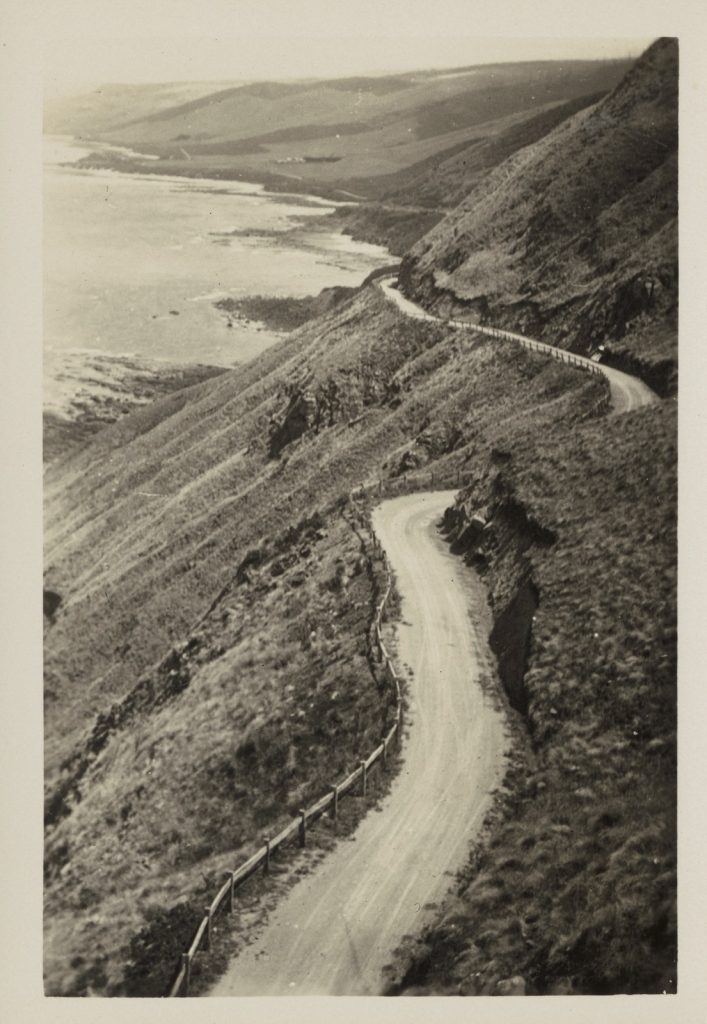
Howard Hitchcock did not live to see the road open. In his honour his car was driven in the procession, his seat empty. A rock wall was built at Mt. Defiance in his memory.

More to explore
The story of the Australian veterans who built the Great Ocean Road – SBS news.
History of the Great Ocean Road – Lorne Historical Society.
Great Ocean Road Trust – archive at the Public Record Office Victoria
References
- The Great Ocean Road, Cobden times and Heytesbury advertiser, 13 March 1918, p. 2
- Ocean Road opening, Weekly Times, 18 March 1922, p. 65
- Memorial Arch at Eastern View 6 June 1939, p. 14. He was appointed chairman upon William Calder’s death in March 1928
- Herald Touring Club Section, The Herald, 30 June 1932, p. 32
- Barrie, Melinda, Everybody loves a road trip!, University of Melbourne, 2009.
- Great Ocean Road opening, The Herald, 19 November 1932, p. 6
- Great Ocean Road. (1932, November 28). The Argus, 28 November 1932, p. 9


Very good read and a magical drive my hat comes off to all the men and women that put there hard work into this beautiful stretch of road
Commuters returning to Geelong on a Monday morning in the 1950s were occasionally held up by Land Slides. Trans Otway Busline used a shorter bus to better navigate some very precarious bends,